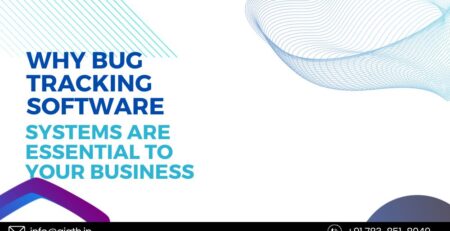Top asset tracking methods
Asset tracking is a basic part of current organizations, empowering productive administration of important assets and stock. From little ventures to enormous organizations, the capacity to screen, make due, and find assets is crucial for enhancing tasks, forestalling misfortune, and guaranteeing responsibility. With a plenty of strategies accessible, each with its own benefits and disservices, organizations have a scope of choices to browse while carrying out asset tracking frameworks. In this exhaustive conversation, we’ll investigate a portion of the top asset tracking techniques, their functionalities, advantages, and likely applications.
Introduction to Asset Tracking
Asset tracking alludes to the most common way of observing an organization’s actual assets, like gear, stock, instruments, vehicles, or any thing of significant worth. The essential objective is to monitor the area, utilization, and status of these assets continuously or occasionally. Productive asset tracking gives experiences into asset usage, upkeep timetables, devaluation, and lifecycle the board, adding to better direction and cost reserve funds.
Several methods have emerged to track assets, each utilizing different technologies and systems. The selection of a tracking method depends on the nature of the assets, the operational environment, accuracy requirements, cost considerations, and other specific needs.
RFID (Radio-Frequency Identification)
RFID technology uses radio waves for data transmission between a reader and RFID tags attached to assets. These tags contain electronic information that can be read by compatible readers within a certain range, enabling quick and efficient asset identification.
Advantages of RFID:
- Automation and Efficiency: RFID allows for automated tracking, reducing the need for manual intervention in asset management processes.
- Real-Time Tracking: It enables real-time asset monitoring, enhancing visibility and control over asset movements.
- Diverse Applications: RFID can be used in various industries, from retail to manufacturing and logistics.
Challenges of RFID:
- Cost: Implementing an RFID system can be expensive, particularly for large-scale deployments.
- Interference: Radio waves might face interference from certain materials or environmental factors, affecting signal transmission.
- Read Range Limitations: The read range might be limited, requiring multiple readers for larger spaces.
GPS (Worldwide Situating Framework)
GPS-put together asset tracking depends with respect to satellite innovation to decide the geological area of assets continuously. It is especially helpful for tracking portable assets like vehicles, compartments, or high-esteem hardware.
Advantages of GPS Tracking:
- Real-Time Location: Provides live tracking of assets, enabling businesses to pinpoint their exact location.
- Geofencing: Allows for setting up virtual geographic boundaries, triggering alerts when assets enter or exit specified areas.
- Enhanced Security: GPS tracking aids in theft prevention and asset recovery.
Challenges of GPS Tracking:
- Signal Interference: GPS signals can be disrupted by tall buildings, tunnels, or certain terrains, affecting accuracy.
- Subscription Costs: Continuous tracking using GPS often requires subscription-based services, leading to ongoing costs.
- Power Consumption: GPS trackers require a power source, and constant transmission can drain batteries quickly.
Barcode and QR Code Scanning
Barcodes and QR (Quick Response) codes are widely used for asset tracking. Barcodes consist of a series of parallel lines that are scanned using optical scanners, while QR codes store information in a two-dimensional pattern that can be read by smartphones or dedicated scanners.
Advantages of Barcode and QR Code Scanning:
- Cost-Effectiveness: Implementing a barcode or QR code system is relatively inexpensive.
- Ease of Use: Scanning is simple and can be done using smartphones, making it accessible and user-friendly.
- Versatility: These codes can contain various information and be applied to different asset types.
Challenges of Barcode and QR Code Systems:
- Line of Sight: Scanning requires a direct line of sight between the reader and the code, which might be impractical for certain assets.
- Limited Data Storage: Barcodes have limited capacity for information storage compared to other methods.
- Durability: Barcode labels may degrade over time, affecting readability.
IoT (Internet of Things) Sensors
IoT involves embedding sensors in assets to gather data and transmit it over the internet. These sensors can track various parameters like location, temperature, humidity, or motion.
Advantages of IoT Sensors:
- Comprehensive Data Collection: Sensors collect diverse data beyond just location, offering insights into asset condition and usage.
- Remote Monitoring: Assets can be monitored remotely in real-time, allowing for proactive maintenance and decision-making.
- Integration Capabilities: IoT sensors can be integrated with other systems for a more holistic approach to asset management.
Challenges of IoT Sensors:
- Complexity: Implementing an IoT system can be complex and require expertise in sensor deployment and data management.
- Security Concerns: As data is transmitted over networks, security becomes a critical issue to prevent unauthorized access.
- Costs: Initial setup costs and ongoing expenses for data transmission and maintenance can be high.
Bluetooth Low Energy (BLE) Tracking
BLE technology enables asset tracking using low-energy Bluetooth beacons, allowing for proximity-based location tracking within a limited range.
Advantages of BLE Tracking:
- Low Power Consumption: BLE beacons have low energy requirements, leading to longer battery life for devices.
- Indoor Tracking: Effective for indoor asset tracking, where GPS signals might not reach.
- Cost-Efficiency: BLE technology is cost-effective, making it suitable for small-scale deployments.
Challenges of BLE Tracking:
- Limited Range: BLE has a limited range compared to other methods, requiring more beacons for larger areas.
- Interference: Signals can face interference from electronic devices or physical obstacles, affecting accuracy.
- Compatibility Issues: Devices need to have compatible Bluetooth technology for effective tracking, which might limit its applicability.
Conclusion
Powerful asset tracking is fundamental for organizations to smooth out activities, enhance asset assignment, and forestall misfortunes. Each tracking strategy accompanies its own arrangement of benefits and difficulties, making it critical for associations to survey their particular requirements and functional climate prior to settling on a tracking arrangement.
From RFID technology’s automation to GPS’s real-time location tracking, barcode simplicity, IoT’s comprehensive data collection, and BLE’s low-energy benefits, companies have a variety of choices to suit their requirements. As technology continues to evolve, the landscape of asset tracking methods will likely expand, offering even more sophisticated and adaptable solutions for businesses in various industries. Choosing the right method requires a careful analysis of cost, accuracy, range, and compatibility, ensuring a tailored and effective asset tracking system for any enterprise.













Leave a Reply